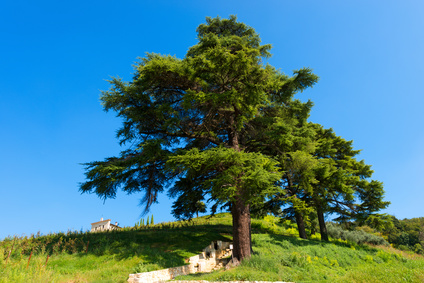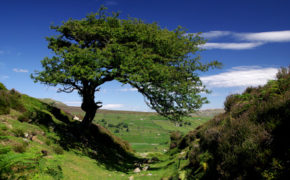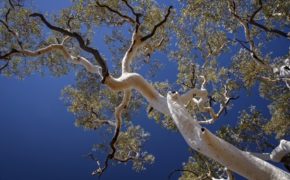
Get a quick no obligation quote It’s free and will only take a jiffy!
Cedar Tree
Everything you need to know about the cedar tree, from identification tips to typical characteristics; how to spot disease and the best way to maintain a cedar tree.
The cedar tree is common in the UK, although it is actually native to the Lebanon and is in fact the country’s national emblem. It is also found in parts of Asia and the eastern Mediterranean. It is an evergreen conifer forming part of the pine family and interestingly, its wood provides protection from insects where the tree grows as a native species.
Considered a popular and eye-catching architectural tree due to its striking appearance, the cedar tree’s low maintenance and next-to-no requirement for pruning makes it a top choice for public grounds landscapers and you will often see cedar trees in estate gardens and parks.
Some scientists recognise two varieties of the cedar of Lebanon, one being the Lebanon variety and the other the Turkish cedar. The tree also has two very close relations, the Cyprus cedar and the Atlas cedar.
General Facts
| Known as | Cedar, cedar of Lebanon, Lebanese cedar, Mediterranean cedar |
| Latin name | Cedrus libani |
| Location | South West Asia, Syria, eastern Mediterranean |
| Foliage | Evergreen |
| Lifespan | Up to 1,000 years |
Characteristics
| Height | 35-40 metres |
| Spread | 8 metres plus |
| Appearance | A Majestic and eye-catching looking pine tree with a single, thick trunk sprouting numerous spirally arranged branches. Younger cedar trees have a cone-shaped crown, although this flattens and broadens with age to give the tree its characteristic appearance. Bark is dark grey-brown with deep fissures developing into maturity. |
| Leaves | Leaves are dark green and needle-like with transparent tips. They appear in spirals in clusters which are present all year round. |
| Flowers | The female flowers transform into a green cone, developing through grey-purple then brown up to a year after pollination. The male flowers appear on different cones which are smaller, evolving through green-grey to brown. |
| Fruit | The cones measure 8-12cm in length and usually appear every other year. Standing upright at the end of the short shoots and barrel-shaped, they grow singularly and feel papery to touch with a flattened top. Male cones are cylindrical whilst the female cones are rounded and covered in seed scales which are released when the cone reaches maturity and breaks up. |
| Found in | Parks and gardens are the most popular homes for cedar trees in the UK. Overseas they tend to grow in mountainous regions or in mixed forests with fir, pine, oak and juniper species. |
Conditions
| Ideal soil | Any well-drained chalk, clay, sand or loam soil is ideal for the cedar tree |
| Soil pH | Acid, alkaline, neutral |
| Aspect | North, south, east or west facing |
| Exposure | Full sun |
Threats
| Pests | Aphids |
| Diseases | Honey fungus |
Cedar Trees and Wildlife
Cedar trees are not thought to have much of a connection with wildlife.
Cedar Tree Symbolism
The cedar tree is the national emblem of Lebanon and was notably used to construct the Temple of Solomon in Jerusalem together with the temples and ships of the Egyptian pharaohs who also used the resin of the tree for mummification.
The cedar tree is well known for its spiritual significance and has been for many thousands of years. The wood was burned in cleansing ceremonies for purification and it is said to be a Jewish custom to burn cedar wood to welcome in the New Year.
The cedar tree was also thought to house important gods and to provide a gateway to higher realms.
The English word cedar comes from the Hebrew ‘qatar’ which means to smudge, which is where the burning of the timber derives from. In the Himalayas cedar is known as ‘deodar’ which comes from the Sanskrit ‘devdar’, meaning ‘timber of the gods’.
The Importance of Cedar Trees
Cedar wood is of exceptional quality and durability and has been used for thousands of years in construction and, in more recent centuries, in furniture making. The wood retains a sweet fragrance for many years and is commonly used to produce oils. Cedarwood oil is an essential oil which is used as a natural insect repellent and an antiseptic as well as to uplift and comfort.
Caring for a Cedar Tree
Cedar trees do not call for too much in the way of regular attention and certainly do not need very much pruning, even during their formative years. Only in situations where a tree has outgrown its space might it be necessary to very, very carefully prune a cedar tree and this must be done with exceptional caution and only during its dormant period. Incorrect pruning of a cedar tree can easily lead to permanent destruction of its appearance and sometimes also its death.
Keeping an eye on the tree and checking for signs of honey fungus though is a good idea. Look out for decaying roots, white fungus between the wood and the bark and rhizomorphs which are all symptoms of this disease. Thankfully though the cedar tree is not nearly as susceptible to pests and diseases as other trees.
If you have a cedar tree or any type of conifer or pine tree on your land that could do with some expert care and attention, why not talk to T.H. Tree Services? As fully qualified and long term experienced tree surgeons, we can offer comprehensive knowledge and skill across all aspects of cedar tree care. For a free, no-obligation quotation, give us a call on 01268 642814 or get in touch here.
Amazing service from Mark and his team. We had a problem with Bamboo that had spread from a neighbours garden. Mark kept us informed with regular phone calls and images of how the work was progressing, as we were not present the house. 1st class job and a pleasure to do business with this company.
Thank you Colin and Gillian for your kind review. It was a pleasure to be able to clear the bamboo for you.








